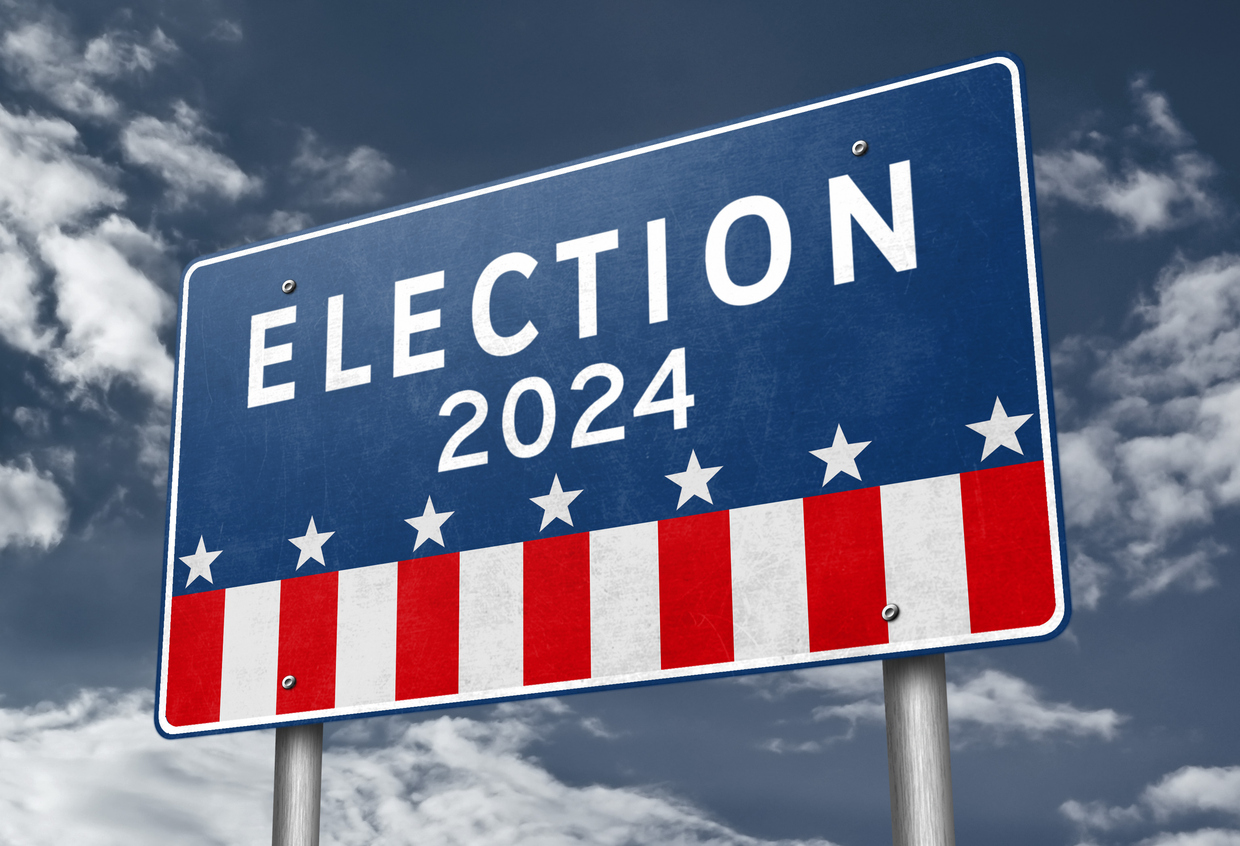With each passing election cycle, investors often find themselves grappling with uncertainty and volatility in the financial markets. The upcoming elections hold particular significance, as political shifts can have far-reaching implications for various sectors and industries. In such times, safeguarding your portfolio becomes paramount.
By adopting strategic approaches and maintaining a diversified investment portfolio, investors can mitigate risks and capitalize on opportunities regardless of the election outcome.
The fourth year of a presidential term is the second-strongest year for the stock market, with the S&P 500 historically posting solid median and average returns of 10.7% and 7.5%, respectively, according to data going back to 1928. Only the third year of a presidential term is stronger.
One idea behind the solid performance during the fourth year of the presidential cycle is that the incumbent president will try to give the economy one last boost via fiscal spending to increase their chances of getting re-elected.
While the stock market has historically delivered solid returns and a win ratio of 75% during the fourth year of a presidential cycle, the gains are rather choppy and don’t happen until the second half of the year.
“Average monthly returns for the S&P 500 during Presidential Cycle Year 4 show a lackluster January through May, a June through August summer rally, a September through October pre-election dip and a November through December post-election relief rally,” Bank of America technical strategist Stephen Suttmeier said in a Wednesday note.
The strongest month of the year tends to be August, delivering an average gain of just over 3% with a win ratio of 71%. Meanwhile, December is typically the month with the highest chance of gains, with a win ratio of 83% as uncertainty around the Presidential election subsides. Finally, May tends to be the weakest month of the year with an average decline of 1.1%. (Yahoo Finance)
Understanding Market Dynamics During Elections:
Elections typically introduce a level of uncertainty into financial markets. Investors may react to changing political landscapes, potential policy shifts, and macroeconomic factors influenced by election outcomes. Consequently, market volatility often increases as investors adjust their positions based on expectations and speculations.
Historical data suggests that market reactions to elections can vary widely. While some elections have triggered significant market swings, others have had minimal impact. Factors such as the perceived impact of policy proposals, economic conditions, and geopolitical developments can influence market sentiment.
Strategies for Safeguarding Your Portfolio:
Maintain a Diversified Portfolio
Diversification remains a fundamental strategy for mitigating risk in any market environment. By spreading investments across different asset classes, industries, and geographic regions, investors can reduce exposure to specific risks associated with individual securities or sectors. A well-diversified portfolio is less susceptible to adverse events that may arise from election-related volatility.
Focus on Long-Term Fundamentals
Amidst election-related noise and short-term market fluctuations, it’s crucial to maintain focus on long-term investment fundamentals. Quality companies with strong balance sheets, sustainable business models, and competitive advantages are more likely to weather temporary market turbulence. Rather than making knee-jerk reactions based on election outcomes, investors should assess their investment thesis based on the underlying fundamentals of their holdings.
Monitor Policy Proposals and Sector Implications
Different sectors may be affected differently by the policies proposed by political candidates. For example, infrastructure spending proposals may benefit construction and engineering companies, while healthcare reforms could impact pharmaceutical and insurance companies. By staying informed about potential policy changes and their sector-specific implications, investors can position their portfolios accordingly.
Consider Hedging Strategies
In times of heightened uncertainty, investors may consider implementing hedging strategies to protect their portfolios against downside risk. Options, futures contracts, and inverse exchange-traded funds (ETFs) are among the tools available for hedging against market downturns. While hedging strategies involve additional costs and complexities, they can provide a degree of protection during volatile periods.
Stay Disciplined and Avoid Emotional Decision-Making
Emotions can cloud judgment and lead to impulsive investment decisions, especially during periods of uncertainty. It’s essential for investors to remain disciplined and avoid succumbing to fear or greed. By sticking to a well-defined investment plan and maintaining a long-term perspective, investors can avoid costly mistakes driven by short-term market fluctuations.
Keep Cash Reserves for Opportunistic Investments
Maintaining cash reserves provides investors with the flexibility to capitalize on investment opportunities that may arise during periods of market volatility. By having liquidity on hand, investors can take advantage of attractive valuations or asset mispricings resulting from election-related uncertainty. However, it’s crucial to strike a balance between holding cash and staying fully invested to ensure optimal portfolio efficiency.
The upcoming elections are poised to bring heightened uncertainty and volatility to financial markets. However, by implementing strategic approaches and maintaining a diversified investment portfolio, investors can safeguard their wealth and navigate through turbulent times. Focusing on long-term fundamentals, staying informed about policy implications, and avoiding emotional decision-making are essential elements of a resilient investment strategy. By adopting a proactive mindset and remaining disciplined, investors can position themselves to weather election-related storms and capitalize on opportunities for long-term wealth creation.

